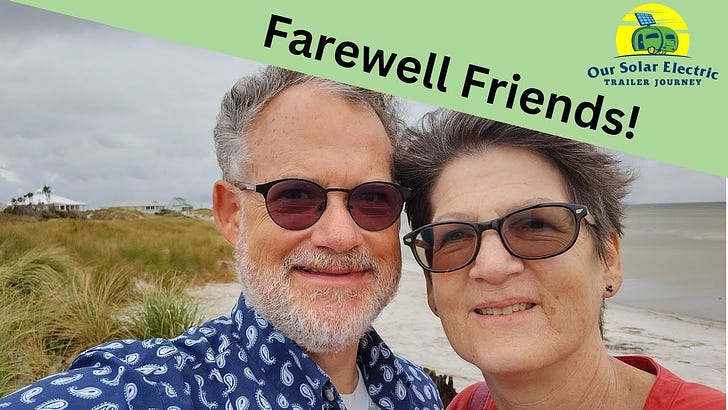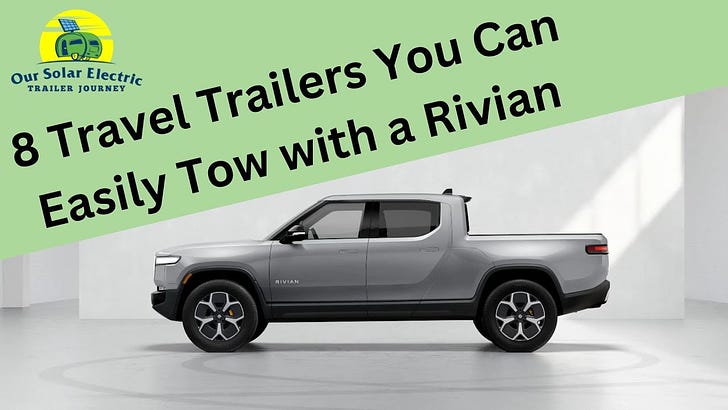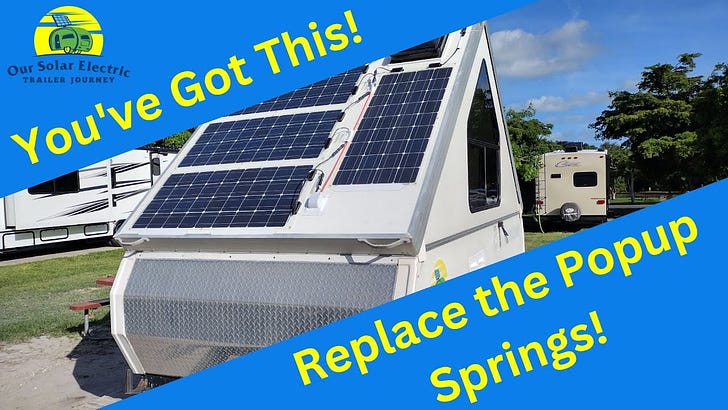This week, we’re going to take a big step back to talk about EV charging basics for our friends who are hoping to buy an EV soon or perhaps have just bought one.
We’ve been driving EVs for almost five years now. We don’t know everything, but we’re confident we have some lessons to share.
EV charging is the biggest worry for people who don’t own EVs. We understand that it is scary, but we want to put your mind at ease.
Charging is easy. Charging is cheap. Charging will get even easier over time as more charging infrastructure is installed.
To talk about EV charging, we have to talk a bit about electricity. When we talk about fuel and mileage, terms like gallons, miles per gallon, miles per hour and their abbreviations, mpg and mph, are second nature.
With EVs, there is a bit of new language to learn. A kilowatt hour or kWh of electricity is a good starting point. On your home electric bill, you probably get charged per kWh. The fee likely ranges from about ten cents to 30 cents, depending on where you live in the country.
A kWh is a measure of energy used, produced or stored. In contrast, when we talk about kilowatts—without the hour—we’re talking about a rate of flow. Think of it like the rate at which gasoline is filling your tank.
Our Chevy Bolt can hold 65 kWh. A top-of-the-line Tesla battery stores about 100 kWh. Our old Nissan Leaf battery was designed to keep about 24 but deteriorated to the point it would hold only about 14 kWh when we traded it in for the Bolt.
Most EVs on the road now get between 3 and 4 miles per kWh. So, a Tesla Model X that gets about 3 miles per kWh with a 100 kWh battery has a range of 300 miles (100 x 3). Our little Bolt, with a 65 kWh battery that gets about 4 miles per kWh, has a range of approximately 260 miles (65 x 4).
Chargers are categorized into three tiers or levels. They are creatively called level 1, level 2 and level 3 chargers.
Let’s start with level 1 chargers. You’ll likely only use these at home.
Level 1 chargers run on the 110 power you use to run your vacuum or your toaster. That 110 refers to the number of volts of power. That outlet produces about 110 to 120 volts at up to 15 amps. To determine the kilowatt rate, multiply volts times amps and divide by 1000.
We think our car charges at 120 volts with 12 amps for 1,440 watts, which is about 1.4 kW (120 x 12 ÷ 1,000).
If you have a garage, you likely have a 110 outlet there that you can use. Your new EV will probably come with a charging cord designed to plug into your regular 110 outlets.
We can charge our 65 kWh battery in just over 46 hours at that 1.4 kW rate. This required no additional investment in our garage.
We generally keep our car plugged in at home to keep the vehicle close to or at 90 percent of a full charge. We only charge 100 percent for a road trip.
This is a cheap way to charge. Our residential rate here in Jacksonville is about 15 cents per kWh. Our former home in Utah was only about 10 cents.
So, if we drive 1,000 miles in a month and get all our juice at home, we’ll need about 250 kWh (remember, we get 4 miles of range per kWh on average, so 1,000 ÷ 4 = 250). That will cost us approximately $37.50 (250 x $0.15) per month–less than 4 cents per mile.
Now, let’s talk about level 2 chargers. These generally run on 220-volt power at about 30 amps, delivering about 7 kW. In our car, that adds about 28 miles per hour of charging. That’s helpful in a pinch, but not how you want to charge on a road trip.
Level 2 chargers are pretty common. Some office buildings have them for guests and employees; some retail locations have them, especially grocery stores and automobile dealers. Sometimes these chargers are available for free!
You can buy a level 2 charger to keep in your car. We have one. The trick is finding an open 220 outlet. One source we’ve found is RV parks. In an emergency, that could be your solution.
Many people with EVs have an electrician install a 220 outlet in the garage to allow faster charging. Almost any car can charge to 90 percent overnight. The new trucks with giant batteries will need more time to charge, even with a level 2 charger.
Level 3 chargers, sometimes called DC fast chargers, typically deliver at least 50 kW, but we’ve found a few at Harley Dealerships that provide just about half that. Our local Harley dealership doesn’t charge for charging!
The fastest chargers we’ve found will charge at a rate of up to 350 kW. That would theoretically charge a big 100 kWh Tesla battery in 17 minutes.
Few cars on the road today can accept a charge at a rate of 350 kW. Our Chevy Bolt is among the worst, topping out at under 60 kW.
Some of the best cars on the road will accept a charge at over 200 kW, meaning that the best cars on the fastest chargers can truly add 200 miles of range in under 20 minutes (200 miles ÷ 3.5 mpk = 57.1 kWh; 57.1 kWh ÷ 200 wk = .285 hours = 18 minutes).
Our Bolt needs an hour to add 200 miles in the best-case scenario. One of the reasons is that all EVs, even the best ones, slow the rate of charge as the battery fills. That is why owners and operators frequently talk about charging to the 80% level. Above that level, charging is slow.
Our experience with charging on level 3 DC fast chargers is generally favorable. Using a variety of apps, you can find them on your way to just about anywhere.
The cost of DC fast charging varies. Most charging networks have a membership fee, so most of us belong to only one. When we charge outside the network, we can pay up to about 50 cents per kWh–but we rarely do so.
We’ve also paid as little as 14 cents per kWh while charging in-network on Electrify America in a place where the company bills per minute.
Many new EV owners worry about the hassles of charging. Because you can charge mostly at home, it is easier and more convenient than getting gas.
On the road, charging our Bolt is inconvenient compared to gassing up a Vehicle with an Internal Combustion Engine or VICE as we call them. We plan our meals for charging stops, and road trips are relaxing.
Cars with 300 miles of range that can charge from 20% to 80% in about 20 minutes are now pretty standard. A 500-mile road trip in one of those would take only about 10 or 15 minutes longer than the same trip in a VICE and would cost less than half as much.
About 5 percent of cars sold this year will be electric. Will you be one of the buyers?
When you purchase an item after clicking a link from this post, we may earn an affiliate commission.















Share this post